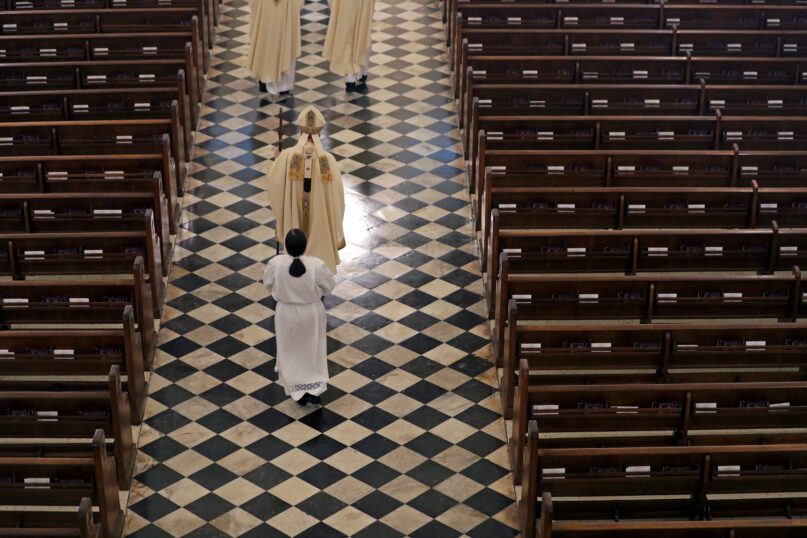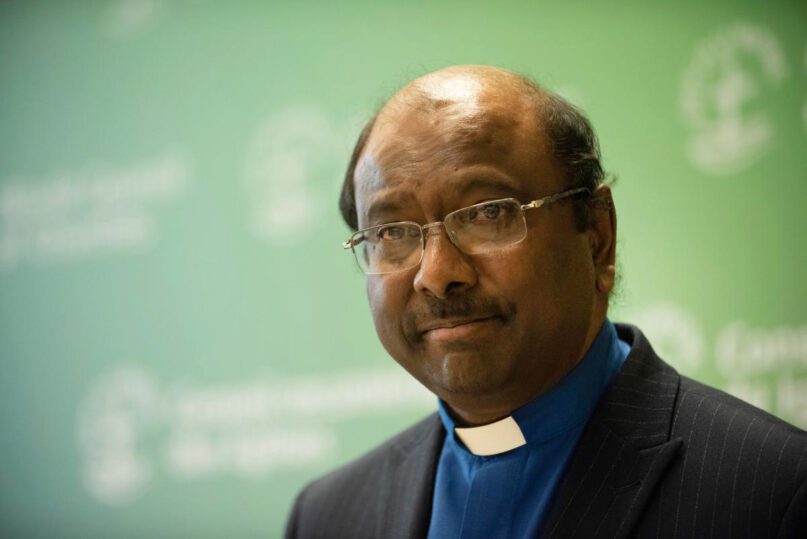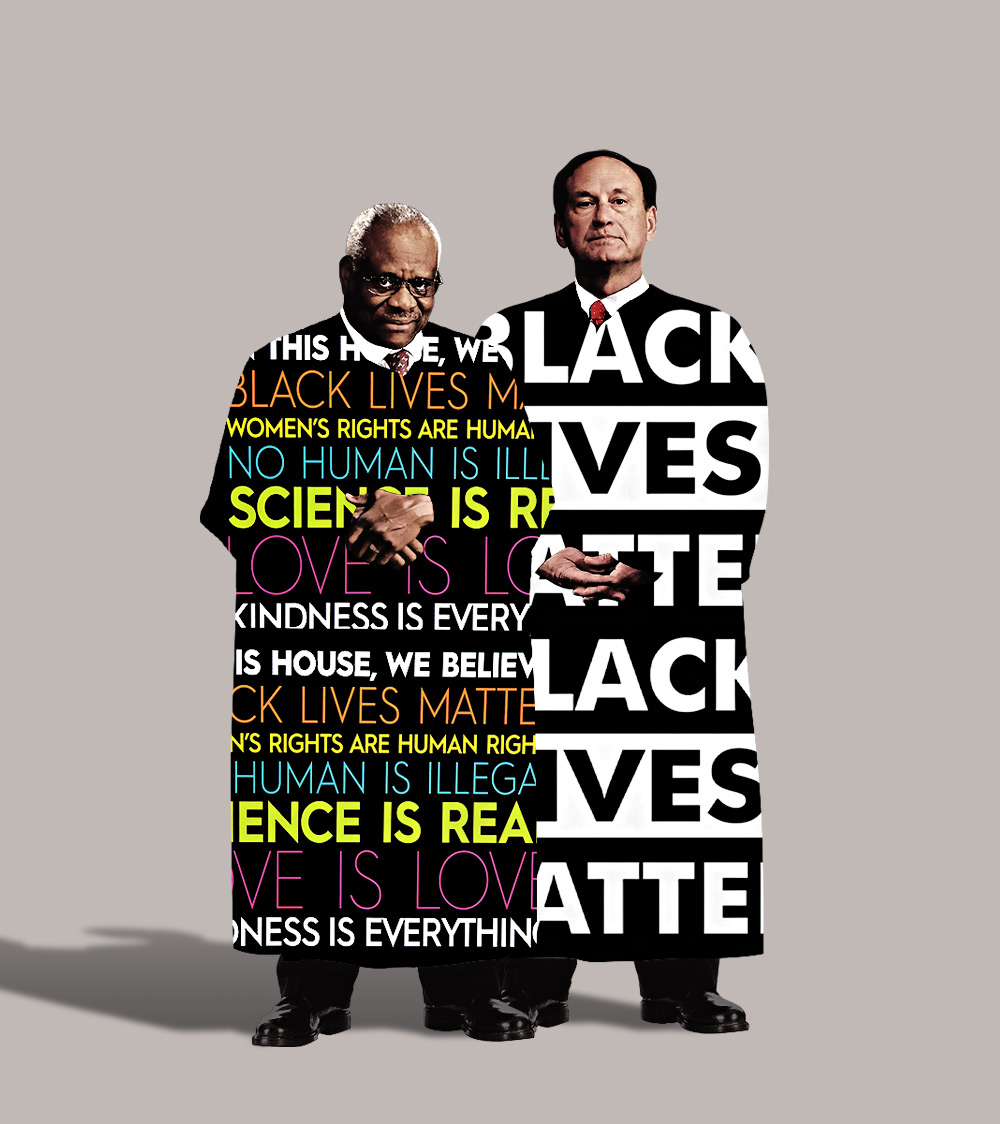The probe could deepen the legal peril for the archdiocese as it reels from a bankruptcy brought on by a flood of sex abuse lawsuits and allegations that church leaders turned a blind eye to generations of predator priests.

Archbishop Gregory Aymond conducts the procession to lead a livestreamed Easter Mass in St. Louis Cathedral in New Orleans, April 12, 2020. The FBI has opened a widening investigation into Roman Catholic sex abuse in New Orleans, looking specifically at whether priests took children across state lines to molest them. The FBI declined to comment, as did the Louisiana State Police, which is assisting in the inquiry. The Archdiocese of New Orleans declined to discuss the federal investigation. “I’d prefer not to pursue this conversation,” Aymond told AP. (AP Photo/Gerald Herbert, File)
June 29, 2022
By Jim Mustian
NEW ORLEANS (AP) — The FBI has opened a widening investigation into sex abuse in the Roman Catholic Church in New Orleans going back decades, a rare federal foray into such cases looking specifically at whether priests took children across state lines to molest them, officials and others familiar with the inquiry told The Associated Press.
More than a dozen alleged abuse victims have been interviewed this year as part of the probe that’s exploring among other charges whether predator priests can be prosecuted under the Mann Act, a more than century-old, anti-sex trafficking law that prohibits taking anyone across state lines for illicit sex.
Some of the New Orleans cases under review allege abuse by clergy during trips to Mississippi camps or amusement parks in Texas and Florida. And while some claims are decades old, Mann Act violations notably have no statute of limitations.
“It’s been a long road and just the fact that someone this high up believes us means the world to us,” said a former altar boy who alleged his assailant took him on trips to Colorado and Florida and abused him beginning in the 1970s when he was in the fifth grade. The AP generally does not identify people who say they have been sexually assaulted.
The FBI declined to comment, as did the Louisiana State Police, which is assisting in the inquiry. The Archdiocese of New Orleans declined to discuss the federal investigation.
“I’d prefer not to pursue this conversation,” Archbishop Gregory Aymond told the AP.
The probe could deepen the legal peril for the archdiocese as it reels from a bankruptcy brought on by a flood of sex abuse lawsuits and allegations that church leaders turned a blind eye to generations of predator priests.
Federal investigators are now considering whether to seek access to thousands of secret church documents produced by lawsuits and shielded by a sweeping confidentiality order in the bankruptcy, according to those familiar with the probe who weren’t authorized to discuss it and spoke to the AP on condition of anonymity. Those records are said to document years of abuse claims, interviews with accused clergy and a pattern of church leaders transferring problem priests without reporting their crimes to law enforcement.
“This is actually a big deal, and it should be heartening to victims,” said Marci Hamilton, a University of Pennsylvania professor and chief executive of Child USA, a think tank focused on preventing child abuse. “The FBI has rarely become involved in the clergy sex abuse scandals. They’ve dragged their feet around the country with respect to the Catholic Church.”
The U.S. Justice Department has struggled to find a federal nexus to prosecuting clergy abuse, hitting dead ends in cases as explosive as the ones outlined in the 2018 Pennsylvania grand jury report that disclosed a systematic cover-up by church leaders. Federal prosecutors subpoenaed church records in Buffalo, New York, the same year in an inquiry that similarly went quiet.
“The issue has always been determining what is the federal crime,” said Peter G. Strasser, the former U.S. attorney in New Orleans who declined to bring charges in 2018 after the archdiocese published a list of 57 “credibly accused” clergy, a roster an AP analysis found had been undercounted by at least 20 names.
Strasser said he “naively” believed a federal case might be possible only to encounter a host of roadblocks, including the complexities of “putting the church on trial” for charges like conspiracy.
But federal prosecutors have in recent years employed the more narrowly focused Mann Act to win convictions in a variety of abuse cases, including against R&B star R. Kelly for using his fame to sexually exploit girls, and Ghislaine Maxwell for helping financier Jeffrey Epstein sexually abuse teenage girls. In 2013, a federal judge in Indiana sentenced a Baptist pastor to 12 years in prison for taking a 16-year-old girl across state lines for sex.
Among the priests under federal scrutiny in New Orleans is Lawrence Hecker, a 90-year-old removed from the ministry in 2002 following accusations he abused “countless children.” Hecker is accused of abusing children decades ago on out-of-state trips, and other claims against him range from fondling to rape.
Hundreds of records currently under the confidentiality order “will reveal in no uncertain terms that the last four archbishops of New Orleans knew that Lawrence Hecker was a serial child predator,” Richard Trahant, an attorney for Hecker’s alleged victims, wrote in a court filing.
“Hecker is still very much alive, vibrant, lives alone and is a danger to young boys until he draws his final breath,” Trahant wrote.
Asked by telephone this week whether he ever abused children, Hecker said, “I’m going to have to hang up.”
More recent allegations are also drawing federal attention, including the case of Patrick Wattigny, a priest charged last year by state prosecutors after he admitted molesting a teenager in 2013. His attorney declined to comment.
Wattigny’s 2020 removal from the ministry came amid a disciplinary investigation into inappropriate text messages he sent a student. The case sent shockwaves through the Catholic community because church leaders had frequently characterized clergy abuse as a sin from the past.
“It was happening while the church was saying, ‘It’s no longer happening,’” said Bill Arata, an attorney who has attended three of the FBI interviews.
“These victims could stay home and not do anything,” he added, “but that’s not the kind of people they are.”
Clergy abuse is particularly fraught in Louisiana, a heavily Catholic state that endured some of the earliest scandals dating to the 1980s. Last year, it joined two-dozen states that have enacted “lookback windows” intended to allow unresolved claims of child sex abuse, no matter how old, to be brought in civil court.
But with few exceptions, most notably a former deacon charged with rape, the accused clergy have escaped criminal consequences. Even at the local level, cases have been hamstrung by statutes of limitation and the political sensitivity of prosecuting the church.
The archdiocese’s 2020 bankruptcy case has also frozen a separate court battle over a cache of confidential emails describing the behind-the-scenes public relations work that executives for the NFL’s New Orleans Saints did for the archdiocese in 2018 and 2019 to contain fallout from clergy abuse scandals.
While the Saints say they only assisted in messaging, attorneys for those suing the church have alleged in court records that Saints officials joined in the church’s “pattern and practice of concealing its crimes.” That included taking an active role in helping to shape the archdiocese’s list of credibly accused clergy, the attorneys contend.
Attorneys for those suing the church have attacked the bankruptcy bid as a veiled attempt to keep church records secret — and deny victims a public reckoning.
“Those victims were on the path to the truth,” Soren Gisleson, an attorney who represents several of the victims, wrote in a court filing. “The rape of children is a thief that keeps on stealing.











:quality(70)/cloudfront-eu-central-1.images.arcpublishing.com/irishtimes/C2DEHNVM6NW4TB2HTCCYDZBSEU.jpg)


